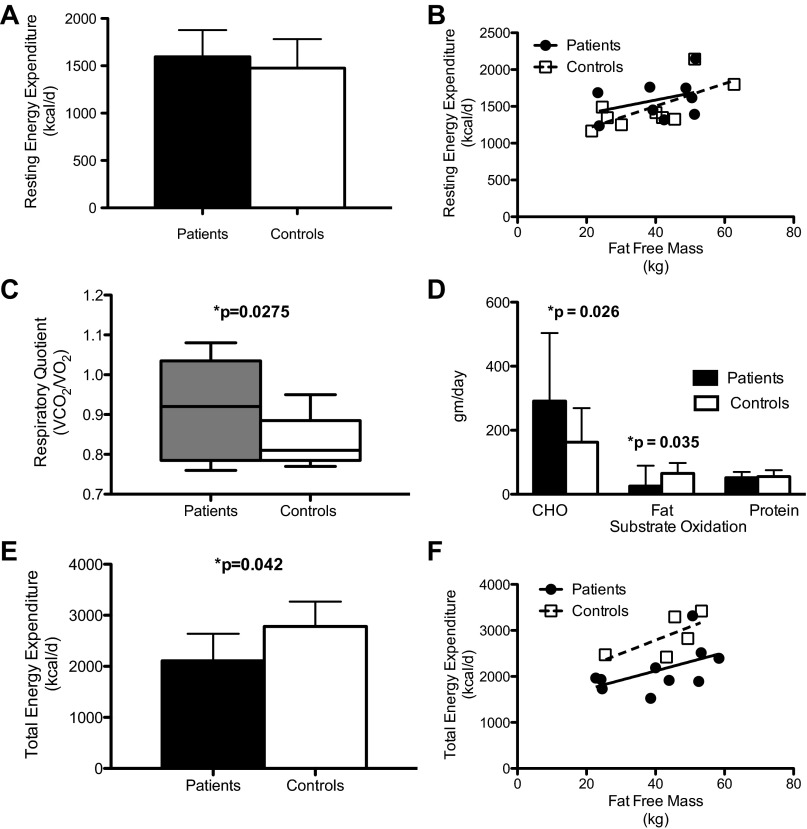Fig. 2.
Energy expenditure and substrate oxidation. Data are presented as means ± SD. Indirect calorimetry was measured after a 10-h overnight fast. LCHAD-deficient patients (n = 9; closed bars and closed circles) have a similar resting energy expenditure as control subjects (n = 9; white bars and open squares) expressed as mean kcal/day (A) or kcal/kg of fat-free mass (B). Resting respiratory quotient was significantly higher in the LCHAD-deficient patients (n = 9; gray box plot) compared with control subjects (n = 9; white box plot). C: LCHAD-deficient patients (n = 8; closed bars) oxidized more carbohydrate and less fat than controls (n = 8; white bars). Total energy expenditure was lower in LCHAD-deficient patients (n = 9; closed bars and closed circles) compared with control subjects (n = 6; white bars and open squares) expressed as mean kcal/day (E) or as kcal/kg of fat-free mass (F).

